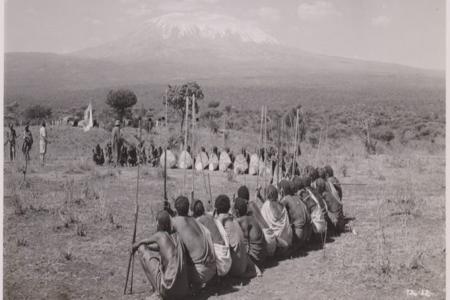Table of Contents
Why Kilimanjaro Is Called ‘Kilimanjaro’ | Kili Quests
What Does “Kilimanjaro” Mean?
Mount Kilimanjaro is the highest peak in Africa — but the name itself is just as mysterious as the summit. Unlike other famous mountains with clear naming origins, Kilimanjaro’s name has puzzled explorers, historians, and linguists for centuries.
Let’s explore the most widely accepted theories and cultural roots behind the name “Kilimanjaro.”

European Records vs. Local Language
When German explorers first mapped the mountain in the 1800s, they heard the name “Kilima Njaro” from Swahili-speaking locals. In Swahili, “kilima” typically means hill or small mountain, and “njaro” was believed to mean shining or whiteness, likely referring to the glacier-capped peak.
So one popular interpretation became:
“Kilima Njaro” = Shining Mountain or White Hill.
However, Swahili wasn’t the first or only language in the area — and the words may have originated from older tribal tongues spoken by the Chagga people.Hans Meyer’s expeditions played a role in documenting and popularizing the name — read more here


Local Linguistic Roots
1. Chagga Theory:
The Chagga people, who live on the southern and eastern slopes of the mountain, never originally called it “Kilimanjaro.” Instead, they called different parts of the mountain by names like:
Kibo (the summit dome)
Kilelema Kyaro (a Chagga phrase that could mean “that which defeats the caravan” — suggesting the mountain’s difficulty)
Some believe “Kilelema Kyaro” was later mispronounced or misrecorded by outsiders, evolving into “Kilimanjaro.”
2. Pare and Maasai Words:
The pare people are an ethnics group living in the Pare Mountains,geographically close to Kilimanjaro .While they have their own language and culture ,they are not directly involved in the naming of Kilimanjaro .But in pare they have some words similares to the word ‘njaro‘ ,which was “njare” mean water or cold. For the Maasai, Kilimanjaro held no single name, but was always regarded with spiritual awe.

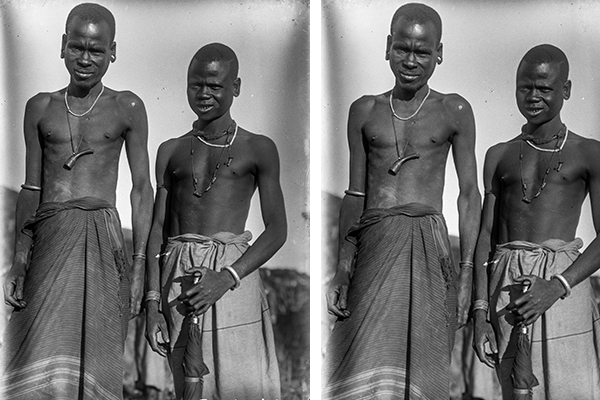
Colonial Influence on Naming
During the colonial era, German and British explorers wrote down place names based on what they thought they heard. With many different dialects around the mountain, names were often simplified, mixed, or misunderstood.
By the late 19th century, “Kilimanjaro” appeared on European maps — even though no local tribe had ever used that exact word as a mountain name before.
This means: “Kilimanjaro” is likely a foreign-made name built from local words.
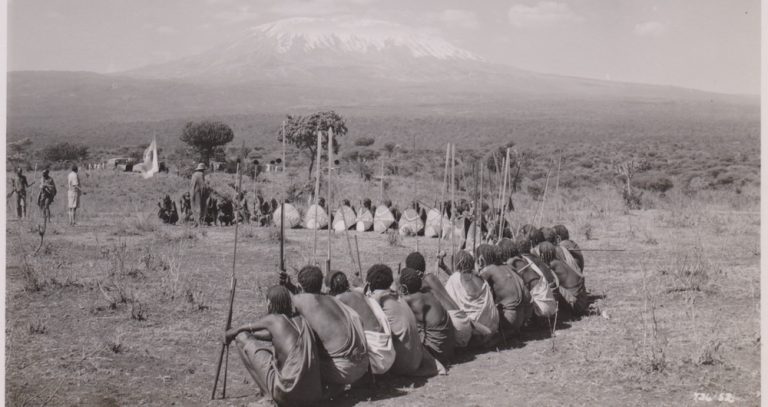
Kilimanjaro: A Name with Many Meanings
Although there’s no single, definitive origin, here are the most common interpretations of the name:
Theory Meaning
Swahili: Kilima + Njaro – Hill of shining whiteness
Chagga: Kilelema Kyaro – That which defeats caravans
Pare dialect – Possibly “cold place” or “water source”
European explorers – Misheard combination of tribal names
Regardless of its etymology, Kilimanjaro has become a symbol of beauty, endurance, and African identity around the world.
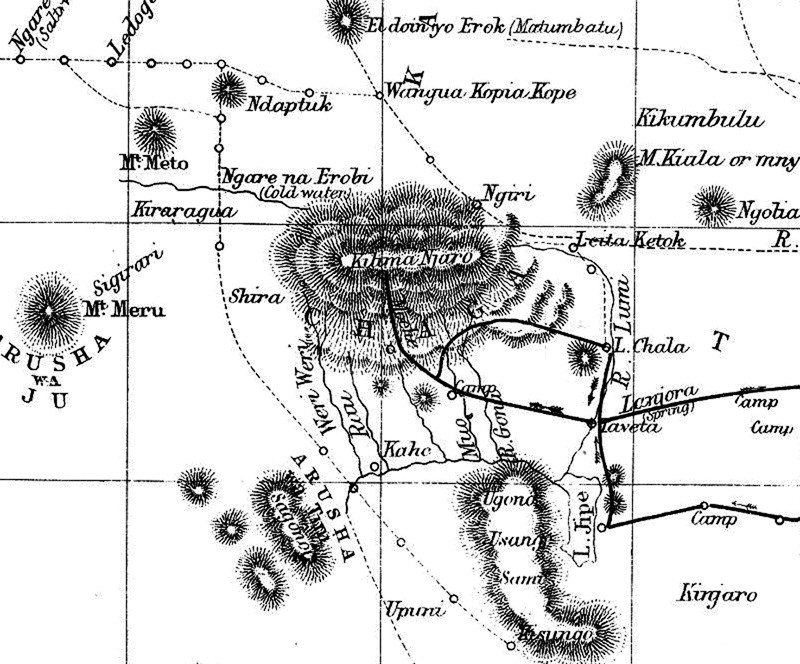
Cultural Value Beyond the Name
For the Chagga, and Pare peoples, Kilimanjaro is not just a name — it’s part of their spiritual landscape. Its glaciers, forests, and slopes are woven into myths, ceremonies, and sacred beliefs.
At Kili Quests, we honor these deep connections by sharing stories from the mountain’s local people, not just its altitude charts.
Learn More from the Locals
Want to dive deeper into the meaning and myths around Kilimanjaro? Read our related article:
Kilimanjaro Myths, Spirits & Tribes: Chagga, Maasai & Pare
Trek with Kili Quests — Where the Mountain Has Meaning
Climbing Kilimanjaro isn’t just about summiting Africa’s tallest peak. It’s about understanding the soul behind the summit — and the people who’ve lived in its shadow for generations.Join a trek where every step connects you to story, culture, and real meaning.
Related Articles
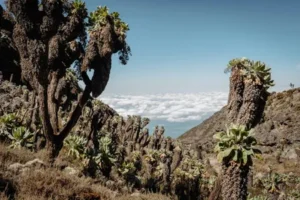
Wildlife and Flora of Mount Kilimanjaro: Full Nature Guide
April 15, 2025
No Comments
Table of Contents Flora and Fauna on Mount Kilimanjaro: What You’ll See on the Mountain Mount Kilimanjaro isn’t just Africa’s highest peak — it’s

Kilimanjaro’s Ecological Zones & Altitude Guide Explained
April 15, 2025
No Comments
Table of Contents Mount Kilimanjaro’s Ecological Zones Explained | Kili Quests Mount Kilimanjaro is not only Africa’s tallest peak — it’s a vertical world
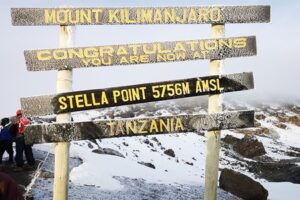
Stella Point: Why It’s Named That & Kilimanjaro History
April 15, 2025
No Comments
Table of Contents Why Is It Called Stella Point? The Story Behind the Name | Kili Quests On your final push to the summit of


